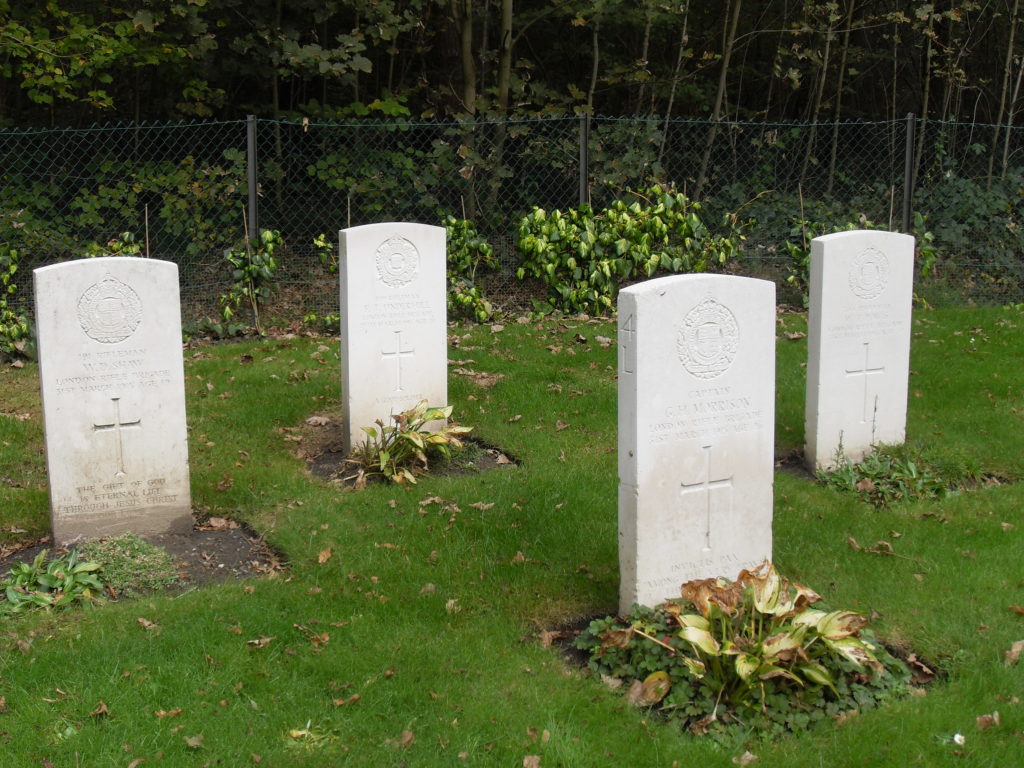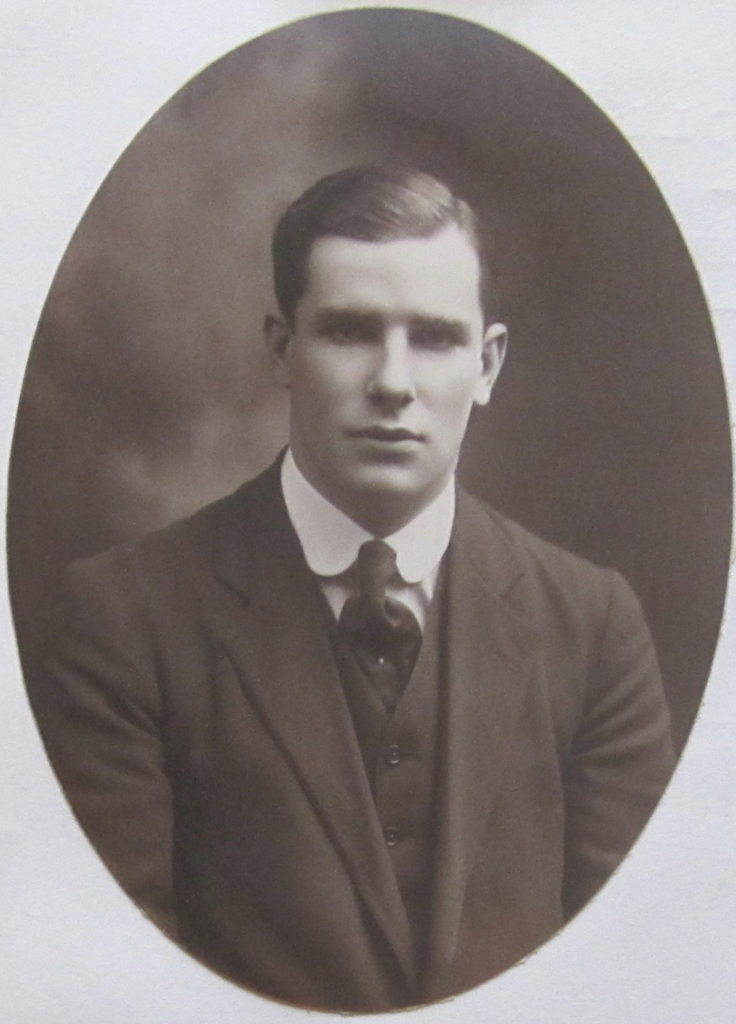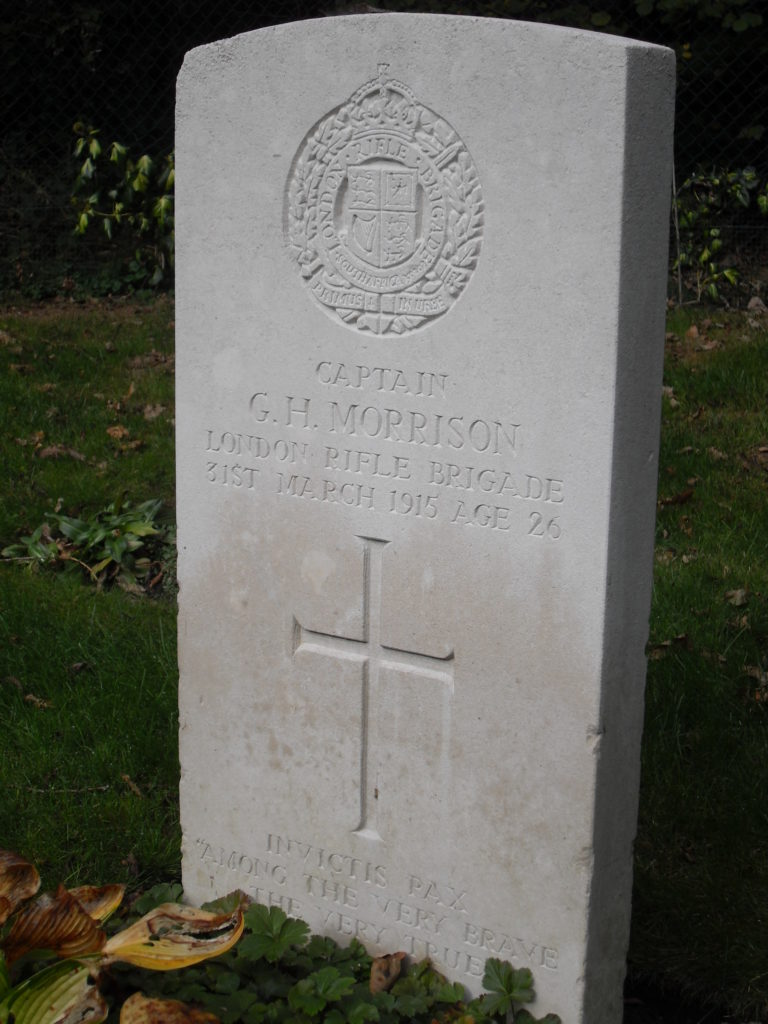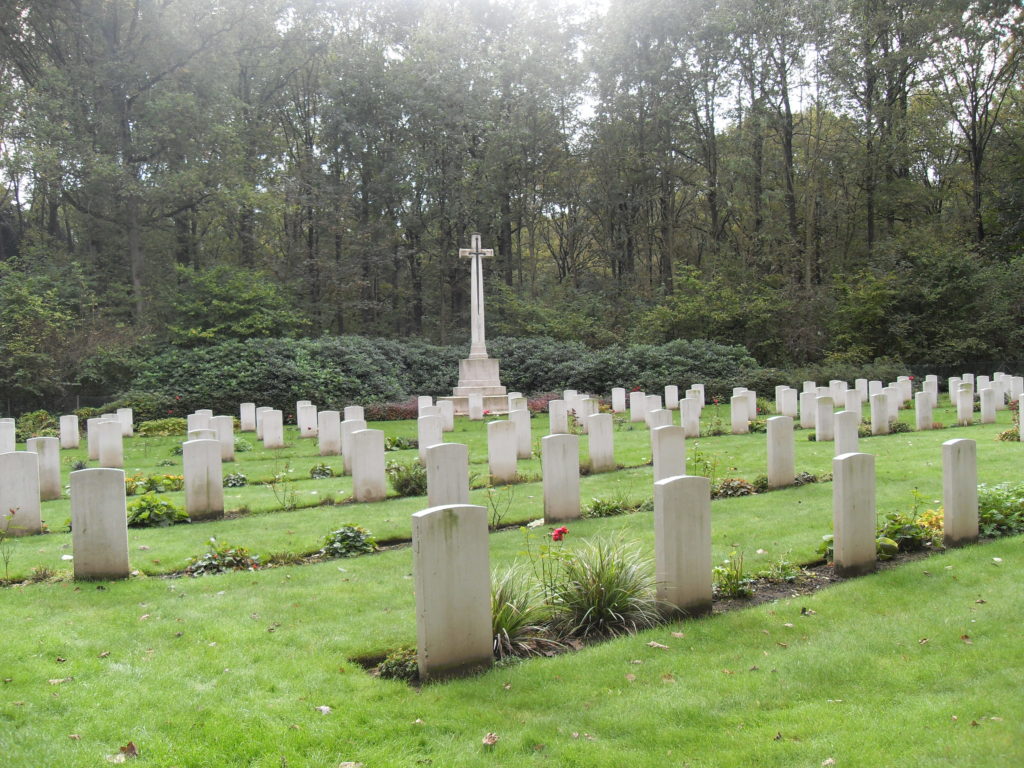Fact file:
Matriculated: 1908
Born: 16 March 1889
Died: 31 March 1915
Regiment: London Regiment (London Rifle Brigade)
Grave/Memorial: Rifle House Cemetery: 4.L.1
Family background
b. 16 March 1889 at 85, Mornington Crescent, London NW1 as the younger son (three children) of John Hebb Morrison (1852–1918) and Muriel Alice Morrison (née Tidd) (1866–1929) (m. 1886), 63, Hamilton Terrace, St John’s Wood, London NW8; later 86, Knightsbridge, London SW1.
Parents and antecedents
Morrison’s father was the son of a Wesleyan minister. He became an underwriter at Lloyds (1891) and subsequently an independent insurance broker (1901).
Morrison’s mother was the daughter of an underwriter who also worked in the insurance business. In 1891 and 1901 the family was living at 85, Warrington Crescent, Paddington, London NW1, and employed four servants; by the time of Gerard’s death it had moved to 63, Hamilton Terrace, London NW8, in the more prosperous district of St John’s Wood. After her husband’s death, Gerard’s mother moved to 86, Knightsbridge, Kensington, London SW1.
Siblings and their families
Brother of:
(1) Ronald Edgar (1887–1965) (m. [1945] Enid Elsie Gabriel [1901–82]);
(2) Dulce Muriel (1889–1974) (later Day after her marriage [1927] to the well-known footballer and cricketer Samuel Hulme Day [1878–1950]), two children.
Ronald Edgar was a Member of Lloyds and a partner in a firm of insurance brokers. During World War One, he served in the Royal Horse Artillery, then the Royal Garrison Artillery, but was discharged because of severe knee injuries.
Education and professional life
From c.1896 to 1903, Morrison attended Ascham St Vincent’s Preparatory School, Eastbourne, Sussex [1888–1939] (cf. G.K. Molineux); he then attended Harrow School from 1903 to 1908, where he was a Monitor (1907–08), the Head of his House and a member of the First Football XI (1907). He matriculated at Magdalen as a Commoner on 14 October 1908, having taken Responsions in Hilary Term 1908, and on 23 October 1908 he was awarded the Diploma in Forestry alongside 13 other Magdalen men, four of whom would be killed in action (M.M. Cudmore, G.B. Gilroy, G.W. Cattley and T.Z.D. Babington). Morrison took the First Public Examination in the Hilary Terms of 1909 and 1910, when he was awarded a 3rd in the Preliminary Examination in Jurisprudence. In Trinity Term 1912 he was awarded a 2nd in Jurisprudence and he took his BA on 10 October 1912 alongside K.C. Goodyear. Morrison was 6 foot 1 inch tall and a keen golf player who played soccer, rugby and tennis for the College and became the President of the Junior Common Room (JCR). After graduation he was articled to Messrs Coward and Hawkesley, a firm of solicitors in the City. In his will, he gave his address as 63, Hamilton Terrace, St John’s Wood, Maida Vale, London.
“He was one of those men who, without being a brilliant specialist either in the Schools or in athletics, steadily make their way in Oxford, and often still more so in the world, by sterling character, sound sense, judgement, businesslike capacity, and courteous and considerate temper. His ability was shown by his taking a Second Class in Law in 1912, his character and general ability by his being elected President of the Junior Common Room and filling that office with entire satisfaction and acceptance.”
Military and war service
After being a member of the Oxford University Officers’ Training Corps from 1909 to 1912, Morrison, “like so many Magdalen men” (President Warren), joined the 5th (City of London) Battalion, the London Regiment (London Rifle Brigade [Territorial Forces]), (cf. H.L. Cholmeley, J.R. Somers-Smith and A.G. Kirby). He was commissioned Second Lieutenant on 21 January 1911, i.e. while still at Magdalen, and promoted Lieutenant on 18 September 1913. The Battalion was mobilized on 5 August 1914 and assembled at its HQ at 130, Bunhill Row, London EC1 as part of the 2nd London Brigade, 1st London (Territorial) Division. On 15 August it volunteered for service abroad and trained at Bisley, Camp Hill and Crowborough until 3 November. It embarked at Southampton on the following day and arrived at Le Havre on 5 November. Travelling towards Ypres via St Omer, Hazebrouck and Bailleul, it arrived at Romarin on 19 November, three days before the end of the First Battle of Ypres, where it became part of 11th Brigade, in the 4th Division (III Corps). Here, the old eight-company system was replaced by the four-company system and Morrison, who had been in 1 Company, became part of ‘A’ Company. By 22 November the Battalion was in the Ploegsteert area, at the southern end of the Ypres Salient where the trenches followed the eastern edge of Ploegsteert Wood to the east of Ploegsteert village. Conditions in the trenches were very bad, for these generally contained two foot of icy water, and it took three men to fill a sandbag: one to hold it open, one to shovel and one to scrape the mud off the shovel. On 7 December 1914 the Battalion was assigned its own section of the line at Le Gheer, to the east of Ploegsteert and just to the west of the Franco-Belgian border, and from 24 December until 1 January 1915 there was a truce, during which not a shot was fired, so that both sides could bury their dead. Although no Battalion war diaries exist for January–May 1915, we know that Morrison was promoted Captain on 21 March 1915 and that the Battalion stayed in the front near Le Gheer until the start of the Second Battle of Ypres on 20 April. On 21 March 1915 it took over a stretch of the line in or near Ploegsteert Wood from the 1st Battalion, the Somerset Light Infantry, and it was here that Morrison was killed in action by a sniper on 31 March 1915, aged 26.
President Warren said of him posthumously:
He was one of those men who, without being a brilliant specialist either in the Schools or in athletics, steadily make their way in Oxford, and often still more so in the world, by sterling character, sound sense, judgement, businesslike capacity, and courteous and considerate temper. His ability was shown by his taking a Second Class in Law in 1912, his character and general ability by his being elected President of the Junior Common Room and filling that office with entire satisfaction and acceptance.
And Christopher Cookson (1861–1948), Magdalen’s Senior Dean of Arts (Senior Tutor) in the years immediately before the war, wrote to Harrow:
I remember when they elected him President of the J.C.R. There were several men in College more prominent and more distinguished in all sorts of ways, but undergraduate opinion very seldom goes wrong in the men they select for the really responsible posts, when they pick out the man who is to represent the best side of them and by whom their generation is to be remembered. […] He showed qualities as President that are very rare, and he raised the whole tradition of the post by the fact that he, a Commoner, never allowed it to interfere with his work.
A brother-officer called him “a born leader of men” and one of the other Magdalen men in the Battalion said simply: “he was one of the best men I ever knew”. Buried: Rifle House Cemetery, Ploegsteert Wood; Grave IV.L.1, inscribed: “Invictis Pax [Peace to/for The Unconquered]. Among the very brave the very true”. [The Latin tag may also be a reference to ‘Invictus’, a four-line poem by William Ernest Henley (1849–1903). Written in 1875 and published in 1888, the poem ends in the two famous lines that would inspire Nelson Mandela during the 28 years of his imprisonment: “I am the master of my fate / I am the captain of my soul”.] The haphazard positioning of the graves in the photo below indicates that the Cemetery was situated on a battlefield and that when the Commonwealth War Graves Commission took it over in 1917, the graves were left where they had been originally dug by the soldiers who fought there. A memorial service was held for Morrison in Magdalen College Mission Chapel, Oakley Square, London NW1, on 13 April 1915. He is commemorated on a memorial plaque in All Saints Church, Eastbourne. Clement Charles Julian Webb (1865–1954, diarist and Fellow of Magdalen 1889–1922), who did not attend Morrison’s memorial service because he was not sure of a place and was worried that he might arrive late, noted in his diary on 6 April 1915: “A very fine young fellow, and a truly good one: a great loss”. He left £2,048 4s. 2d.

Morrison’s Grave is second from the right in this isolated group of four men from the same Battalion who were killed in action on the same day.
Bibliography
For the books and archives referred to here in short form, refer to the Slow Dusk Bibliography and Archival Sources.
Printed sources:
Harrow Memorials, ii (1918), unpag.
The History of the London Rifle Brigade (1921), especially pp. 67 and 83.
J.L. Johnston’s brother Hugh was in the Battalion when Morrison was killed and Johnston describes him as “my brother’s great friend”. See: Edwin Bevan, A Memoir of Leslie Johnston (London: SCM, 1921), p. 242.
Archival sources:
MCA: Ms. 876 (III), vol. 2.
MCA: PR 32/C/3/889 (President Warren’s War-Time Correspondence, Letters relating to G.H. Morrison [1915]).
OUA: UR 2/1/66.
OUA (DWM): C.C.J. Webb, Diaries, MS. Eng. misc. d. 1160.
WO95/1498.
WO374/49065.




